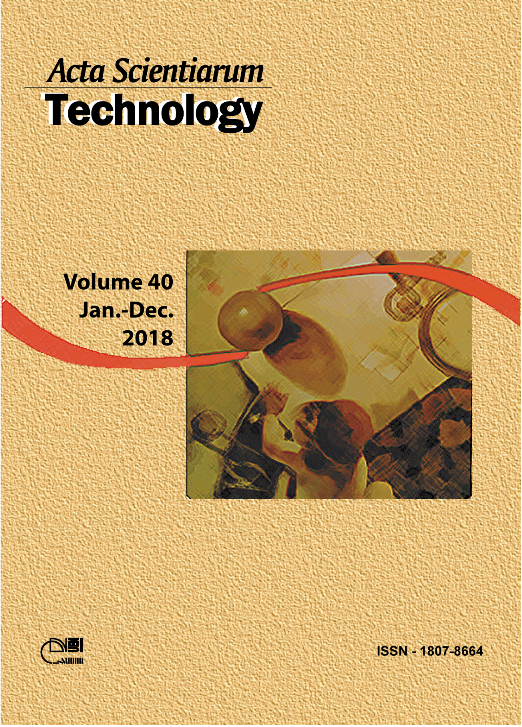<b>Influence of different dielectrics fluids on the surface integrity of high speed steel
DOI:
https://doi.org/10.4025/actascitechnol.v40i1.35386Keywords:
machining by electrical discharges, dielectric fluid, microcracks and heat affected zone.Abstract
Machining by electrical discharges is a huge process for the machining of complex shapes in materials that are electrical conductors, in particular for those of high hardness, difficult to be machined by conventional processes. Its unique feature of using thermal energy to machine parts has been a distinctive advantage in the manufacture of moulds, dies, aerospace components, and surgical, and of course, it can be widely used in the industry of tooling in the manufacture of geometric features, such as, for example, cavities narrow and deep, grooves, thin-walled, and small corner radii. One of the materials that are widely machined by spark-erosion is the tool steel (ABNT M2, has good toughness, hardness and abrasion resistance being indicated for the manufacture of stamping dies. The present work describes experiments conducted on a modern machine eletroerosiva using the electrode-tool of electrolytic copper in the machining of parts from high-speed steel (ABNT M2 to investigate the effect of different fluid dielectric about the generation of microcracks and heat affected zone (HAZ). A review of the comparative shows that the surfaces machined with dielectric fluid “A†have low values in the length of the microcracks compared with the other fluids. In the meantime, the machined surfaces with the dielectric “B†have a lower density of microcracks.
Â
Downloads
Downloads
Published
How to Cite
Issue
Section
License
DECLARATION OF ORIGINALITY AND COPYRIGHTS
I Declare that current article is original and has not been submitted for publication, in part or in whole, to any other national or international journal.
The copyrights belong exclusively to the authors. Published content is licensed under Creative Commons Attribution 4.0 (CC BY 4.0) guidelines, which allows sharing (copy and distribution of the material in any medium or format) and adaptation (remix, transform, and build upon the material) for any purpose, even commercially, under the terms of attribution.
Read this link for further information on how to use CC BY 4.0 properly.



















8.png)




